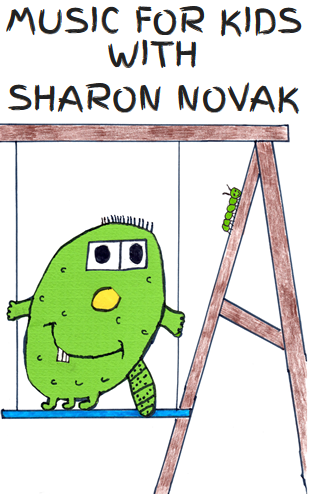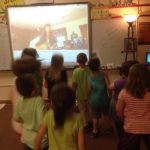A Pippilo and Jumping Up and Down: Good Songs for Young Children
Parents and children’s song writers know that there is a huge world of children’s music to be found, and it comes in many different styles! Most all of it is lively and has great rhythm. After seven years of experience with singing and writing for young children I have come up with a few rules to follow. I sing with babies, toddlers, and preschoolers almost everyday. When I write new music I test it with my audiences. If it does not pass the test, it will either be edited or completely omitted from my list of songs to go on my CDs.
Here is my list of qualifying characteristics for good children’s music
1. Songs have to be easy for little ones to understand. I write about topics that they love. They like to move. They like ice cream and pizza. They think about what is under their bed. They love to be silly. Funny words and sounds are great! They love animals, especially pets and farm animals. Boys love fire engines and zombies. Oh, and the list goes on! Anyone who has kids can finish it. I love to listen to little children’s play and conversations for the best material.
2. The children have to enjoy and request my songs. This is the feedback that tells me the song is good. I love to hear children ask for my songs! And they do, because I listen! I don’t write for me. I write for the children. I often say that the children write the songs.
3. The songs will appeal to a young child’s sense of humor or need for movement. Children love to laugh. Children are more stressed today than ever. Having a song that makes them laugh or invites them to dance alleviates that stress. We as adults love music for the same reason! Our favorite songs often help us to forget about our problems! Children like songs that do the same thing! Being able to have the freedom to jump up and down and fly like a bird brings joy!
4. Children love songs that invite them to add some information to a story. For preschool teachers, this is great. Not only are the children having fun, they are learning. They are learning how to be creative. Filling in information in songs helps them learn how to write their own material. When children are asked to give their input into a song, they feel valued. I’ve seen it on their faces, and I know this is why they enjoy these songs and request them.
5. Children love songs that ask them to move. Children are learning to listen to and follow directions. This is a skill that they will be using for the rest of their lives. In a fun song, learning this skill is not a chore. Learning while they are having fun is the best education. Studies are beginning to prove this!
6. Children love songs that invite them to do a certain activity. I use felt activities and other props a lot. Children are often invited to add to or take away felt figures on a felt mascot for the song. What a wonderful activity that teaches preschoolers to listen to and follow directions. Children have to really pay attention to and be aware what is going on in order to participate in the song well. Most children want to do this as they love handling the manipulatives and helping.
7. Repetition works. I repeat phrases a lot. Little minds do not want to be trying to absorb too much information at one time. Repetition reinforces the message and makes the song easy to remember. Adults actually like this too. Good songwriters for adults know this also.
Good children’s songs are very useful in preschools, children’s playgroups, or for mommy or daddy and me time. The characteristics that I have described make the songs fun and educational. Music is so very valuable for children and they love it.
We don’t always have to use kids songs. We should expose our children to all kinds of music. Playing what we love is important also, and exposing them to many different styles of music is invaluable.
The bottom line is that we have to make it fun and start dancing and learning with music!



